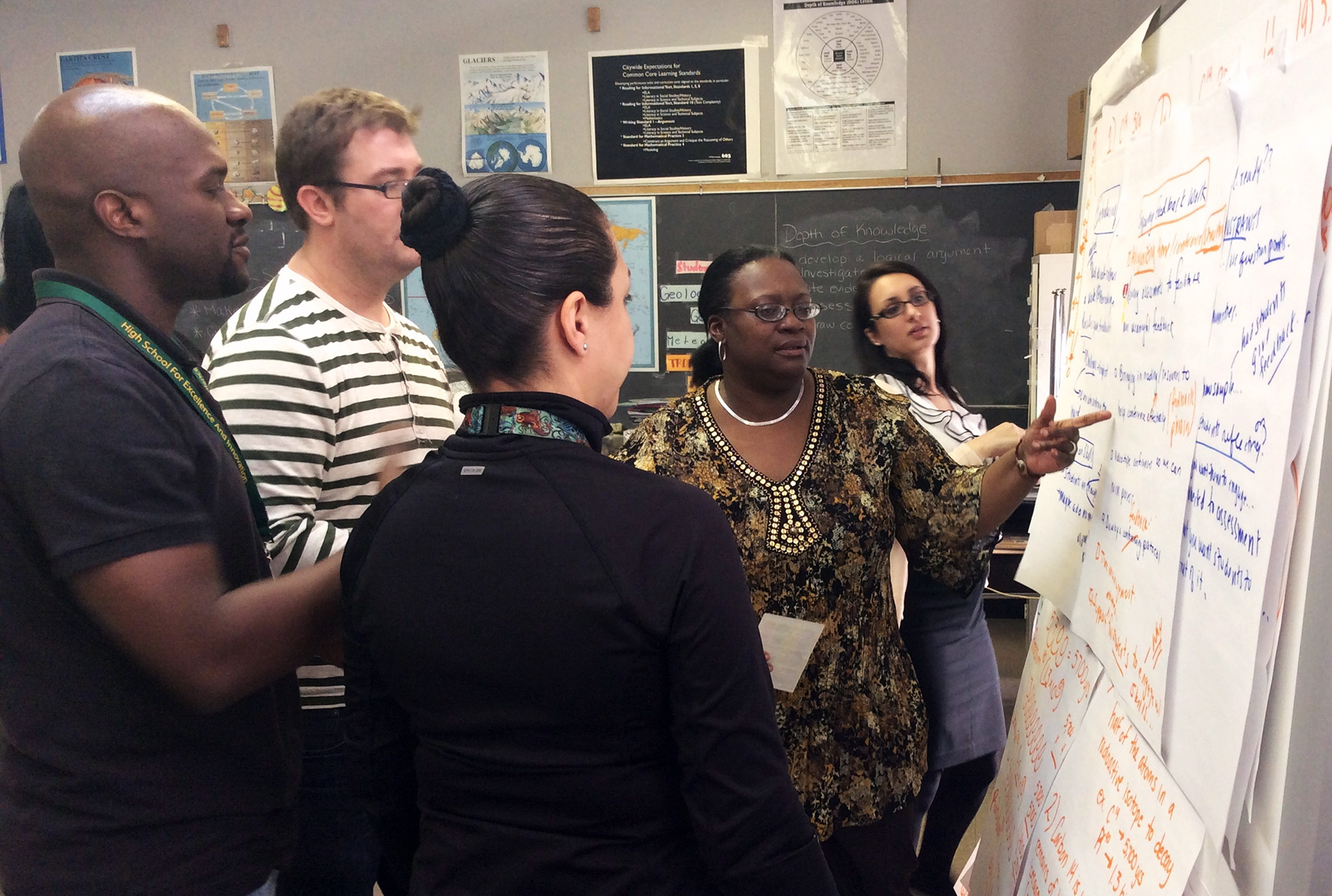What We Do: Design Projects >> Data-Guided Leadership
Individualized Interventions: Using Data to Think about Student Learning
Schools have many measurements of success at their disposal, including school attendance, class grades, and schoolwide assessments. These measurements are critical for schools like High School for Excellence and Innovation (HSEI), whose mission is predicated on student improvement. Located at the northern tip of Manhattan, HSEI is a transfer school designed for students who have been held back twice prior to graduating from eight grade. In designing a system for measuring student improvement, founding principal Tyona Washington notes, “We wanted to look for patterns and strengthen what we do for positive student outcomes.” She reached out to Eskolta to help identify meaningful correlations in the data that would measure student improvement in a manner that would best inform teachers and students.
To make the data digestible, Eskolta Director Michael Rothman engaged in analysis across multiple data sets and used this to present a clear visual representation of student assessments that highlighted aggregate trends and displayed graphs alongside individual student names. This helped make the information feel useful and real to the school staff. Eskolta’s presentation quantified the difficulties many school staff knows instinctively—that there is not a clean-cut, direct relationship between high grades and high scores on assessments. In fact, while there was a correlation of approximately 20 percent between student English Language Arts grades and literacy assessment results, there was a correlation of nearly 80 percent between the same grades and attendance—suggesting that grades had been telling more about attendance and behavior than skill development. Additionally, Eskolta’s analysis showed that students demonstrated greater mastery of reading fluency than reading comprehension. In view of this finding, school staff opted to place more explicit emphasis in all courses on the skill of making inferences and to tie this directly to the grading policy.
Eskolta’s quantitative research set the groundwork for productive action. Principal Washington affirms, “The data Eskolta tracked informed grouping our students for targeted interventions. Online programs and research-based reading intervention programs were used to help accelerate student’s literacy levels.” She notes, “The project was eye-opening as we needed expertise in how to introduce data in an effective way. [Eskolta] had an approach that allowed staff to be honest about their struggles with this unique population.” By highlighting key trends in the data and translating this analysis into action, Eskolta helped HSEI meet its goal of connecting grades to student improvement.

